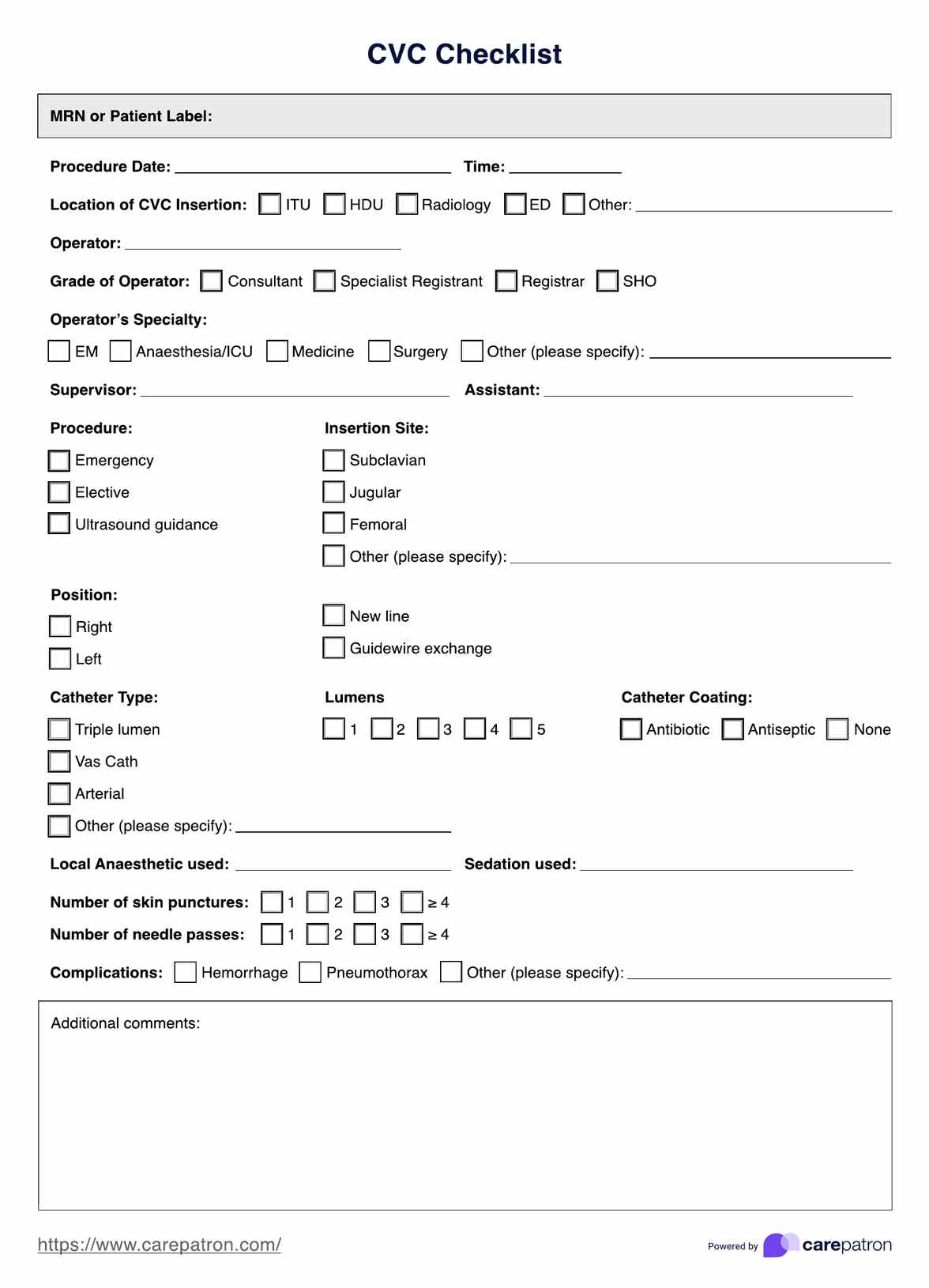Healthcare professionals use the CVC checklist to ensure all necessary safety measures and best practices are followed during the insertion, maintenance, and removal of Central Venous Catheters (CVCs). It aims to minimize complications, improve patient safety, and standardize care.

CVC Checklist
Discover an essential CVC checklist for efficient business operations. Streamline your processes and enhance productivity with our comprehensive guide.
CVC Checklist Template
Commonly asked questions
A Central Venous Catheter (CVC) includes a long, flexible tube inserted into a large vein (usually in the neck, chest, or groin) to administer medication, fluids, and blood products or to obtain blood tests and measure central venous pressure. It may have multiple lumens for different purposes.
Inserting a CVC involves selecting an appropriate vein and site, using sterile technique, equipment, and often ultrasound guidance, to place the catheter into the central venous system. The position is verified (typically with an X-ray), and the catheter is secured and covered with a sterile dressing.
EHR and practice management software
Get started for free
*No credit card required
Free
$0/usd
Unlimited clients
Telehealth
1GB of storage
Client portal text
Automated billing and online payments











